My name is Petter Tärbe and I’m one of the biggest golf nerds around. I was born in 1981 and have played golf for 35+ years. I’ve excelled with scoring in the mid 60s after overcoming very hard challenges in this beautiful game. The joy of teaching great ball striking gives me the biggest satisfaction in my work life.
Forgotten Master Moves is my homage to the game of golf and the place where I use my experience and studies to simplify and describe how to execute successful golf swing movements. I firmly believe that the code to “the perfect golf swing” was cracked in the mid-1900s. This belief shapes what I teach and prefer, but I also explore and describe other swing models.
Wish to contact me? Email at forgottenmastermoves@gmail.com or use Skillest to reach out here.
General Motivations
I play golf because I love the feeling of hitting crisp, perfect shots that fly as I envision them. That moment of pure ball striking sends a wave of satisfaction through my entire system, fueling my passion to train and play as much as possible. I know firsthand how much clear, noise-free information has contributed to my development as a solid ball striker. Since writing is my preferred form of communication, this website was born.
If I visit a random driving range, 5+ out of 10 golfers struggle with poor contact, often looking like they’re on the verge of giving up. It seems like most are endlessly chasing the holy grail—those rare, perfect shots that appear for a moment only to vanish just as quickly. To put it another way – I believe there are big misunderstandings of a basic golf motion and I aim to use the website to clarify how I perceive a full functioning motion.
Furthermore, I’m deeply motivated to create a structured information hub where any beneficial advice is given the necessary context. In one sense, I appreciate social media for providing access to information, but at the same time, I recognize that very few people can truly benefit from it. Most advice is presented without context, often driven more by content-pushing business models than by a genuine effort to help golfers improve.
Golf & Injury Background
Starting at seven years old, I reached a 4 handicap by age 13. By 19, I fluctuated between 1 and 3, but my development had stalled, and I played with a two-way miss from hell. Looking back, I now realize that shooting par in those days was a far greater accomplishment than going 67 today—I was playing an unnecessarily difficult game.
After stagnating in my early 20s, I stepped away from golf, only to return in my early 30s. I made my first real swing change and started shooting under par, which sparked my passion for understanding change and, later, coaching.
Driven by back injuries, I experimented further with my swing and began posting even lower scores, peaking with a 64 and a personal record of nine birdies in one round. Little did I know, I was only digging a deeper injury grave—my swing changes were reinforcing harmful pressure in the worst possible way. Here is an article about back issues and the golf swing.
This set me on a mission to truly understand the golf swing. I spent five years barely playing, instead focusing on the root causes of my injuries and searching for a motion that could deliver both under-par ball striking and a healthy body. I entered a “swing change bonanza” with the dual purpose of mastering the swing and returning to competitive golf.
In mid 2024, I emerged from this journey with a pain-free body and a swing that brings me the happiness I seek without the risk of injury. This swing style—90% influenced by the greats of the past—is what I am now dedicated to teaching, refining, and sharing. Despite only performing it for a short fraction of my golf life, I already play at a +handicap level, can hit 1,000 balls per day if I choose, and, most importantly, remain pain-free.
Coaching/Mentor Style & Ambitions
I’ve worked as an on-site golf instructor at one of Sweden’s largest training facilities for three years until my injuries caught up with me. During this time, I conducted thousands of in-person lessons and educational courses.
Coming from the corporate world, where research, clear chronological order, and structured hierarchy were essential for project success, I was fascinated by the way golf instruction operated. Customers would pay significant amounts for a single 25-50 minute lesson to fix one of the most complex motions in sports. That’s like spending a week of ad-hoc meetings to implement an 18-month business system overhaul—it’s doomed to fail.
During my teaching certification, I was taught the importance of KISS (Keep It Simple, Stupid), which was fundamentally the opposite of what I needed to make meaningful changes in my own game. I quickly realized that the standard lesson structure wasn’t going to work for me. While I was successful within that framework, it never felt right. My biggest challenge became: how do I create a teaching format where students learn for life? How do I transition from being just an instructor to a mentor—someone who empowers students to become their own coaches?
My solution is the Knowledge First Approach. If you intellectually understand what you are supposed to do, you subconsciously open the door to change. My coaching model is a one-month swing transformation, guiding students through a Knowledge Phase, Swing Change Phase, and Future After Change Phase. I’d rather teach 10,000 golfers once (and not rely on repeat business because they don’t need more lessons) than teach 100 golfers 100 times each.
An even bigger challenge was (and always will be): What to Teach. During my on-site coaching days, I often found myself caught up in the lesson-by-lesson grind—discussing, analyzing, and teaching the swing without a clear, overarching concept. I searched for answers, but the existing golf instruction systems never truly addressed what I wanted as a student. There was no clear explanation of how to naturally produce, accelerate, and control power in a sustainable way. Most information focused on external, technical advice that felt impractical. I knew from growing up on the course that this wasn’t how real improvement happened, so my search continued toward understanding the deeper layers of the golf swing.
My criteria became clear:
- Power must come with control.
- The core movement needs an absolute, clear description.
- The swing must be easy to achieve.
- It cannot cause injuries.
- It should feel effortless.
The more I learned, the more I realized that the golf swing is severely over-taught. My sincere belief is that the swing was already figured out between the 1920s and 1970s. Once you start exploring the inner layers of the motion, most modern instruction becomes irrelevant. What I do isn’t something others can see. Observing external mechanics often hinders development—unless you’re trained to observe the deeper, driving forces behind the swing.
Long story short: The FMM Swing Academy is my revival of the old great’s inner driving movement. It’s the manifestation of everything I know where I have spring cleaned away all, in my opinion, irrelevant information and focus it straight to the core of everything. The system won’t fit everyone but for the you that resonate with this, I’m really looking forward to teaching you what I know. Knowledge first paves the way.
Ball Striking Statistics and Equipment
We live in the modern age where numbers have become interesting so here they are (I’m 44 years old (in 2025), 181 cm, about 90 kgs and a bit more than average strong).
- Driver effortless clubhead speed (ish): 107-110 mph depending on general form.
- Driver max clubhead speed: In pure speed training 115-16 mph.
- Driver stats for stock effortless shot: In to out 1-2 degrees, neutral attack angle, smash 1,47-150, carry 260-280 yards ish most of the time.
- Driver stock shot shape: Slight push draw.
- 7 Iron clubhead speed effortless: 90-93 mph ish and a carry of 170-180 yards. A semi high push draw.
- 54 degree wedge normal shot: 120 yards ish with a slight push draw.
Playing Set:
- Driver: Titleist 909 D3 8,5 degree, 44,5 inch with a 53 degree lie angle (I have cracked it down from 59 which is standard) and a 75g stiff graphite shaft. I don’t use modern drivers since they are all too upright (which limits the ability to produce natural power) and the difference in distance isn’t that big.
- 3 Wood: Titliest 915 at flattest setting (55,5 degrees I think) with a Graffaloy Blue Prototype NT 65 g shaft that I cut in the tip to make it stiffer. My favorite club for decent distance and accuracy.
- Fairway Finder 3 Wood: Titleist 905 Titleist flattened to 54,5 degrees DG S300 shaft. Shortened to 42 inch. I use it from time to time.
- 5 Wood: 905 Titleist flattened to 55 degrees with DG S300 shaft. I switch between this and the driving iron depending on course. It flies slightly shorter but higher than the 2 iron.
- Driving Iron: Srixon ZX 4 degrees flat with Nippon Tour105 X steel shaft. If I play a tight course this is a go to weapon for getting it out there 230-240 yards ish.
- Irons 4-PW: Titleist 716 MB 4 degrees flat with DG X-100 (wish to “upgrade” this to S400s in the future). I use mid size cord grips.
- Wedges 50, 54 & 58: Callaway MD4 S Grind 4 degrees flat with DG 115 Tour Issue.
Training set – “to train harder than the game”:
- Driver: Titleist 983E at 53,5 degrees with a stock graphite shaft. I like the small head to train impact.
- Driver 2: Thinking about getting a persimmon at 51-52 degress lie angle too for extreme training.
- Spoon: Titleist 905 flattened to 54,5 degrees with true temper steel shaft. Small head, flexy heavy shaft and lower lie angle.
- Irons: Getting some kind of super punishing blade set that has a similar “feel” as the 716 MB with DG shaft. Still to find. Let me know if you’ve got something in mind… Also thinking about making my training set somehere around 5-6 degrees flat to stimulate low grip pressure.
Contact & Feedback
I’m always open for suggestions and feedback.
Just send me an email on: forgottenmastermoves@gmail.com
Or contact me on SKILLEST here.
More FMM Swing Articles

The Swinging Protocol – In the Core of all Great Golfers?
I have a special interest in the golf world, and that is to understand what actually built the best swings of all time. Not just how they look, but what truly built them. What…

A Powerful Golf Swing Clips It – Stop Chasing Divots
We are all performing golf swings based on inner images, muscle memory, and athleticism. These different subconscious images will shape how we perform our motion. A powerful golf swing clips it in a shallow,…
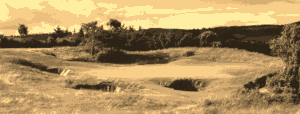
Perform Your Backswing in Front of Yourself – The Vertical Lift
The backswing might be the most difficult part of golf. Do it right, and while there are no guarantees of a perfect result, do it wrong and you’ve almost certainly ruined your chances of…
Some General Swing Tech Posts (with Videos)
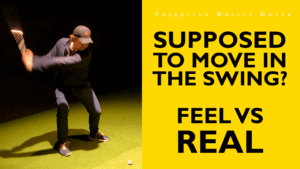
Natural Golf Swing Movement: Centered Look a Byproduct of Moving?
Natural Golf Swing Movement – Paves the Way for an Effortless Feel At first glance, my golf swing may look centered, but my real focus is on natural golf swing movement, almost like dancing…

An Invisible Golf Swing – How the Observation is Deceiving
The Golf Swing is Invisible? How the Effects of Intentions are hard to see What I do isn’t always what you see. What you do isn’t always what I see. The golf swing is…

AIMING in Golf – Is EYE DOMINANCE Causing You to Miss?
AIMING in Golf – Is EYE DOMINANCE Causing You to Miss? Aiming in golf isn’t as easy as you might think. Aiming too much right as a right-handed golfer is the most common fault…
General Article Collection Pages

All Articles Library – All Creations in One Place
Everything I’ve created over the years. You have different filterings according to the list below. Wish to watch Youtube videos instead? Then click here to open Wish to visit my Skillest Profile (coach app)?…
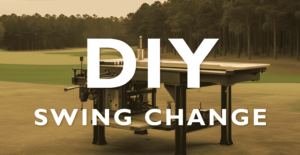
DIY Swing Change – Advice on How to Successfully Change
Do It Yourself, DIY Swing Change, is what has driven me the last decade in my golf swing development. The absolute enjoyment of figuring out a swing change myself. To all of you out…
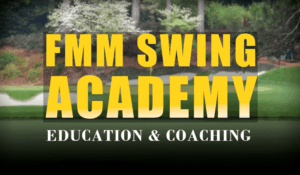
FMM Swing Academy – 3 Release Styles. 3 Swing Patterns
FMM Swing Academy Almost everyone who plays golf wants to get better and tries to get better, but doesn’t get better. Why? Let’s look at what differentiates a good golfer from a not-so-good golfer….

Golf’s Best Systems – Much Needed Golf Technique Context
I categorize golf motion styles into systems for the sake of clarity and understanding. No golfer fits perfectly into a single system, but without a structured framework, you’re essentially shooting in the dark. These…
Old School General Articles
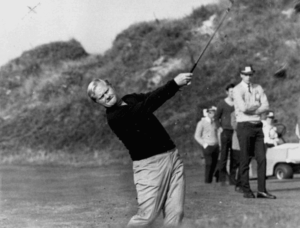
Why Jack Nicklaus Swing Work – Free of Modern “Rules”
Most people have Ben Hogan as their swing god, and sure, he’s awesome, but my personal favorite will always be Jack Nicklaus Swing. The Golden Bear. It’s the simplicity and effortless feel of it…
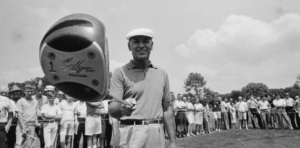
Ben Hogan Swing Rebuild – The Breakthrough That Changed Golf Forever
Nothing in golf quite compares to Hogan’s dominance in the 1940s and 1950s. The Ben Hogan swing rebuild, which he eventually shared through Five Lessons and other insights, shook the golf world—but without the…
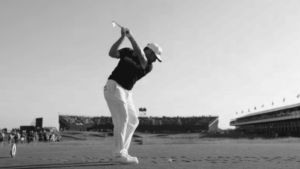
Old School Swinging Elements on Tour – A Modern Case Study
Modern top tier golfers definitely display old school swinging elements of the old greats. These swing styles are making their way back to the leaderboards today. How to spot Old School Swinging Elements? Once…